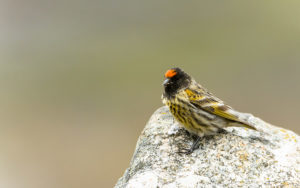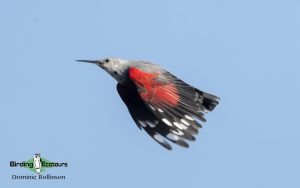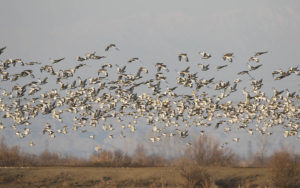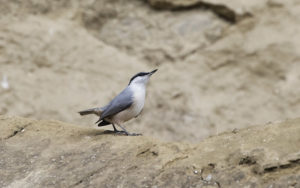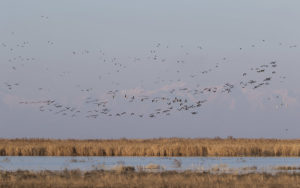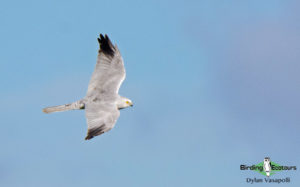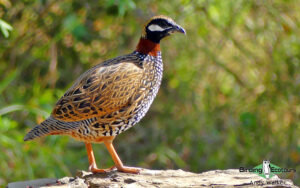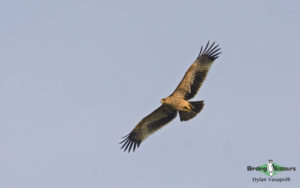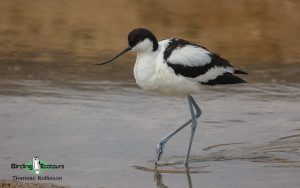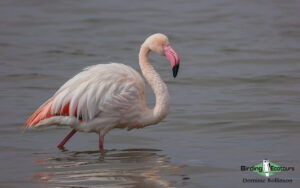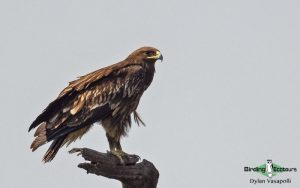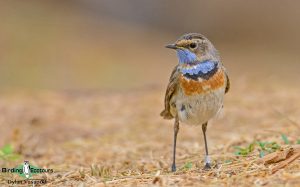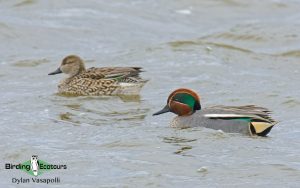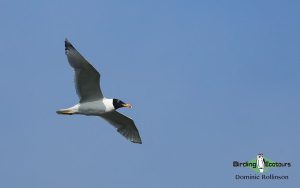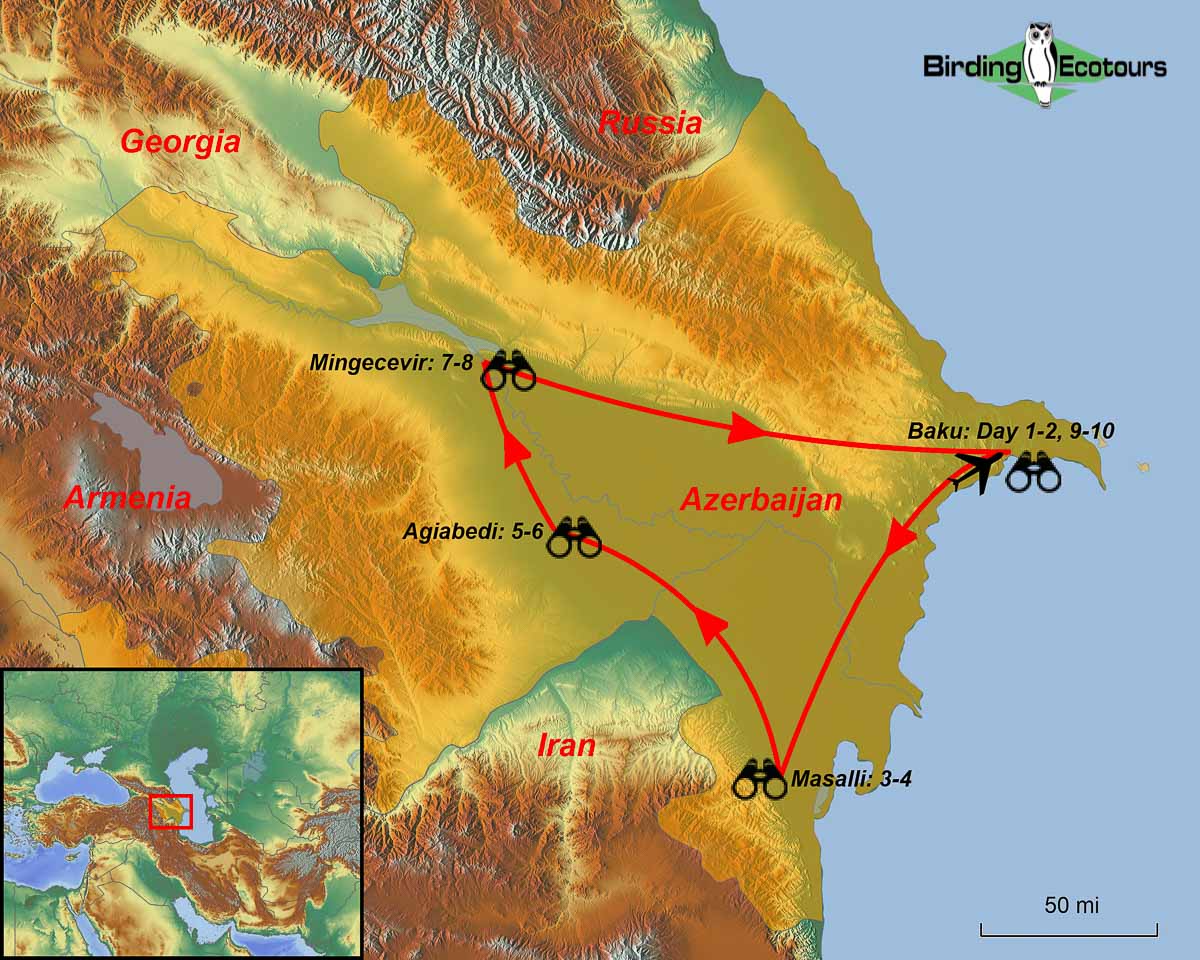Azerbaijan: The Enchanting East
Birding Tour Azerbaijan: The Enchanting East
February 2026
Azerbaijan is one of the Western Palearctic’s best kept secrets, and one of the most productive, and exciting winter birding areas in the region. Situated in the Caucasus region, which joins Europe and Asia, Azerbaijan is a country where literally anything could (and frequently does) turn up from across Europe, the Middle East, and Asia. We are delighted to offer this small group tour (maximum of eight people) to this remarkable country and we are sure you will enjoy our offering.
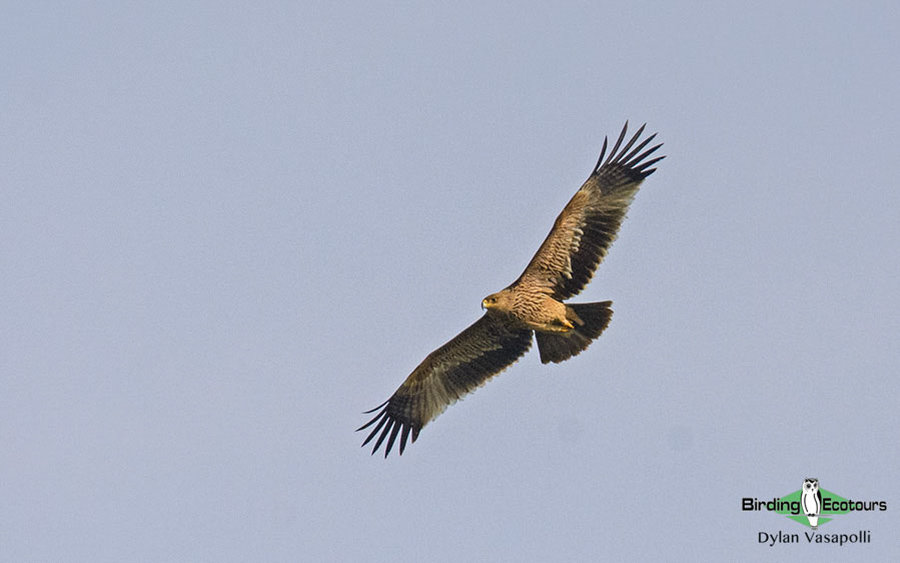
Despite its small size, Azerbaijan has recorded 423 species (following International Ornithological Congress (IOC) taxonomy v13.1 as of July 2023). Many of these species are hugely sought after due to their being highly range-restricted in the Western Palearctic, or due to the difficulty of accessing them in other parts of their range. During our birding in Azerbaijan, we will visit a number of BirdLife International’s Important Bird Areas (IBAs), including Absheron archipelago (north) and Pirallahi Bay IBA, Gobustan area IBA, Shorgel lakes and Shirvan Reserve IBA, Kura Delta IBA, Gizilagach State Reserve IBA, Lake Mahmudchala IBA, and Aggyol IBA.
While numerous familiar and widespread European species are possible on this tour, it is the Western Palearctic range-restricted species that we will be really targeting, including species like Grey-headed Swamphen, White-tailed Lapwing, Pallas’s Gull, Black Francolin, Eastern Imperial Eagle, Red-fronted Serin, Marsh Sandpiper, Moustached Warbler, Syrian Woodpecker, and White-winged Lark. We also have a chance of surprise species like Black Lark and (Asian) Buff-bellied Pipit (japonicus subspecies). Additionally, we should keep our eyes out for globally threatened species like Dalmatian Pelican, Pallid Harrier, Red-breasted Goose, Lesser White-fronted Goose, Marbled Duck, Ferruginous Duck, White-headed Duck, Armenian Gull, and vast flocks of Little Bustard.
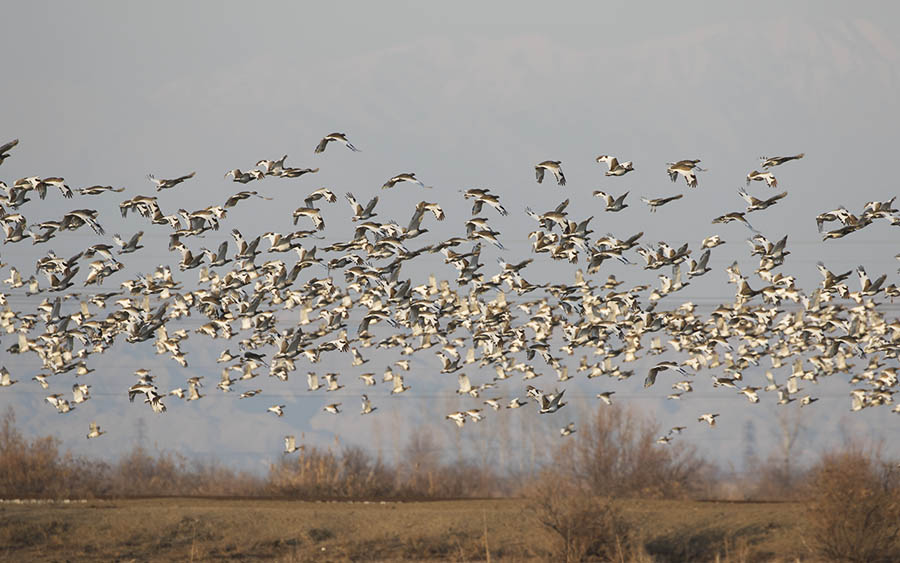
Wallcreeper and Bearded Reedling (Tit), both monotypic families are also possible on this tour. These interesting and rare species are the real attraction of birding in Azerbaijan in winter. However, we will also come across a wide range of more common wildfowl, shorebirds (waders), birds of prey, and passerines that spend the winter in this fascinating part of the world. We will also look for a range of mammals with Goitered Gazelle, Red Fox, (European) Grey Wolf, Small Five-toed Jerboa, and Jungle Cat all being possible.
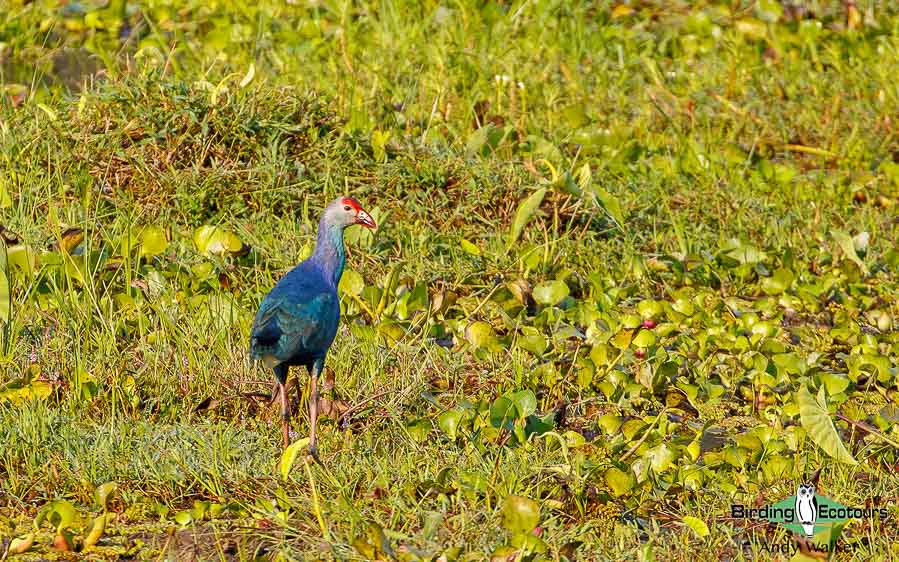
Immediately before this tour we have our Birding Tour Bulgaria: Birding the Black Sea and Vitosha in Winter tour. This equally exciting tour offers an excellent range of species, including Red-breasted Goose, Lesser White-fronted Goose, Tundra (Bewick’s) Swan, Middle Spotted Woodpecker, Lesser Spotted Woodpecker, Black Woodpecker, Dalmatian Pelican, Pygmy Cormorant, Spotted Nutcracker, Sombre Tit, and so much more! We are sure you will love it!
Itinerary (10 days/9 nights)
Day 1. Arrival in Baku, optional evening bird walk and exploration of the city
Welcome to Baku, the oil-rich capital of Azerbaijan. You will be met at the airport, after your morning arrival, by your Birding Ecotours tour leader and local birding guide. We will transfer you straight to your modern hotel which overlooks the Caspian Sea, perfect for birding from your room! After our group welcome lunch, we have the option, depending on how tired you might be feeling, to take a walk around the fascinating, high-tech capital which matches Dubai, in the United Arab Emirates, for design and striking architecture.
We have a chance of seeing some good birds in this sprawling metropolis, with common species including Common Pochard, Tufted Duck, Black-headed Gull, Hooded Crow, Eurasian Blue Tit, Common Blackbird, White Wagtail, Common Chaffinch, Great Tit, Goldcrest, European Greenfinch, Song Thrush, and Redwing. Other species we should keep an eye out for include Black-necked (Eared) Grebe, Brambling, Laughing Dove, and Pygmy Cormorant.
Overnight: Baku
Day 2. Absheron National Park and Gobustan area
Today we will start our birding properly, by visiting the Absheron National Park, part of the wider Absheron archipelago (north) and Pirallahi Bay IBA, this promises to be a particularly bird-filled day. This is Azerbaijan’s most easterly point and is an exciting mix of steppes, dunes, sandy beaches, wetlands, and lagoons. Wildfowl will be plentiful with the main target being the Endangered (BirdLife International) White-headed Duck. There are thought to be less than 9,000, perhaps as few as 5,000, individuals of this striking duck left in the wild, making it a highly prized, and rare species. Other wildfowl found here include Tundra (Bewick’s) Swan, Whooper Swan, Eurasian Wigeon, Tufted Duck, Northern Shoveler, Mallard, Eurasian Teal, Smew, Red-breasted Merganser, Red-crested Pochard, and large numbers of wintering Common Pochard and Greater Scaup.
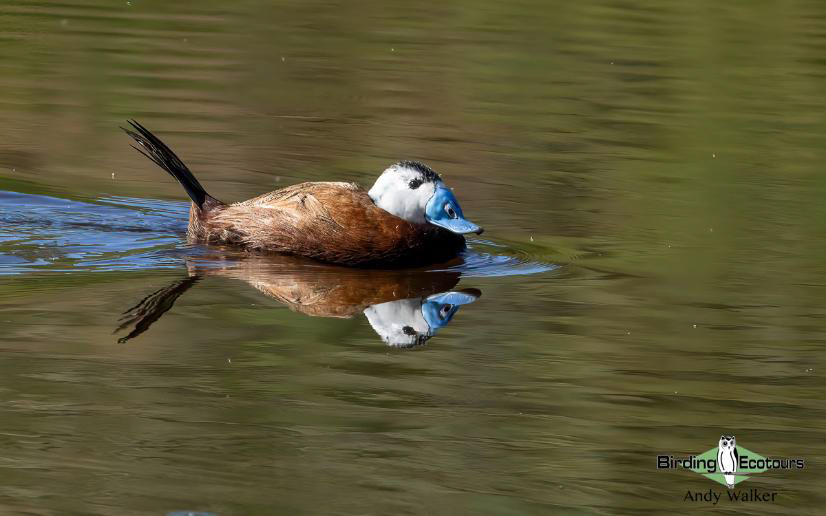
Being on the coast, Absheron National Park is a hotspot for wintering shorebirds (waders) and during our visit we should have little trouble finding Grey Plover, European Golden Plover, Kentish Plover, Common Ringed Plover, Eurasian Curlew, Sanderling, Dunlin, Little Stint, Common Greenshank, and Common Snipe. There should also be a large number of grebes offshore with Little Grebe, Black-necked Grebe, and Great Crested Grebe being the most likely species. In the nearby steppes we will look for globally significant flocks of the Near Threatened (BirdLife International) Little Bustard, along with roving flocks of Spanish Sparrow and Common Linnet. Birds of prey like Long-legged Buzzard, Common Kestrel, Merlin, Hen Harrier, and Western Marsh Harrier should be hunting around the peninsula.
We must also be sure to scan the large gull flocks that can winter here. As well as the more numerous Black-headed Gull, Common Gull, Little Gull, and Caspian Gull, we may also come across Pallas’s Gull. This giant of a gull has a restricted range in the Western Palearctic, with just a smattering of wintering areas found around the Caspian Sea and Red Sea, with breeding territories in southern Ukraine, so not an easy species to catch up with in general.
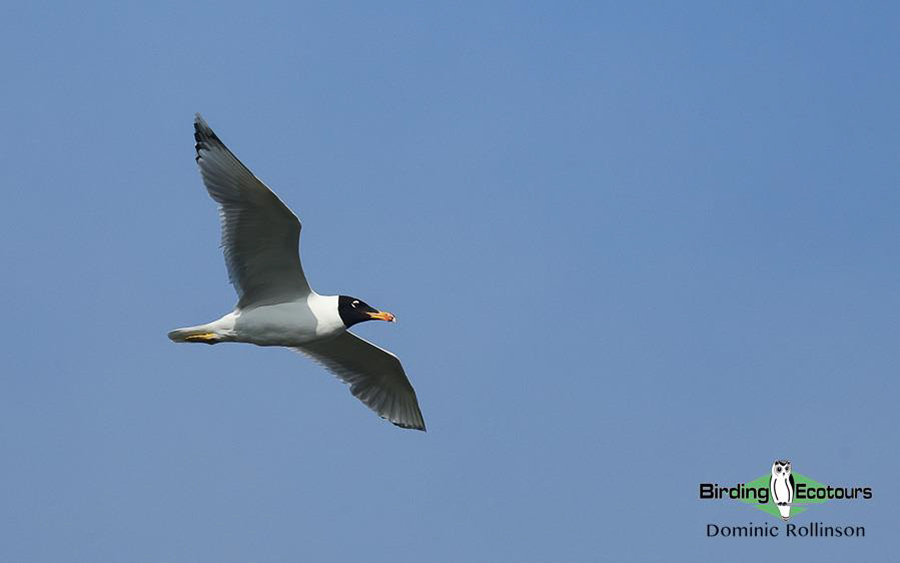
Further exploration of the steppes here will give us the opportunity to discover more of the passerines found on the peninsula. We should have little difficulty finding the large flocks of Eurasian Skylark and Calandra Lark which winter on the coast of the Caspian Sea. Checking these flocks carefully will be essential as the stunning White-winged Lark may be hidden among them. This species has a limited range in the Western Palearctic and is a real key species to look for on our tour. We should also come across common passerines like Crested Lark, Meadow Pipit, and Common Reed Bunting.
In the afternoon we will move south to Gobustan Rock Art Cultural Landscape, part of the Gobustan area IBA. This is a UNESCO world heritage site for its collection of more than 6,000 rock art engravings, which date to 40,000 years ago! We will of course stop to enjoy these wonders of ancient human history, but the area is also an excellent spot for birding in a vastly different habitat to the morning. As we explore the rocky areas we will search for some truly special birds. The highlight here is Wallcreeper, a highly prized species belonging to a monotypic family. We will also look for two species that are restricted to this part of the Western Palearctic: Finsch’s Wheatear and Red-fronted Serin, with plenty of other highlight species possible, including Western Rock Nuthatch, Rock Sparrow, Rock Bunting, Chukar Partridge, Ruddy Shelduck, Hawfinch, Twite, European Serin, and Red-billed Chough.
Overnight: Baku
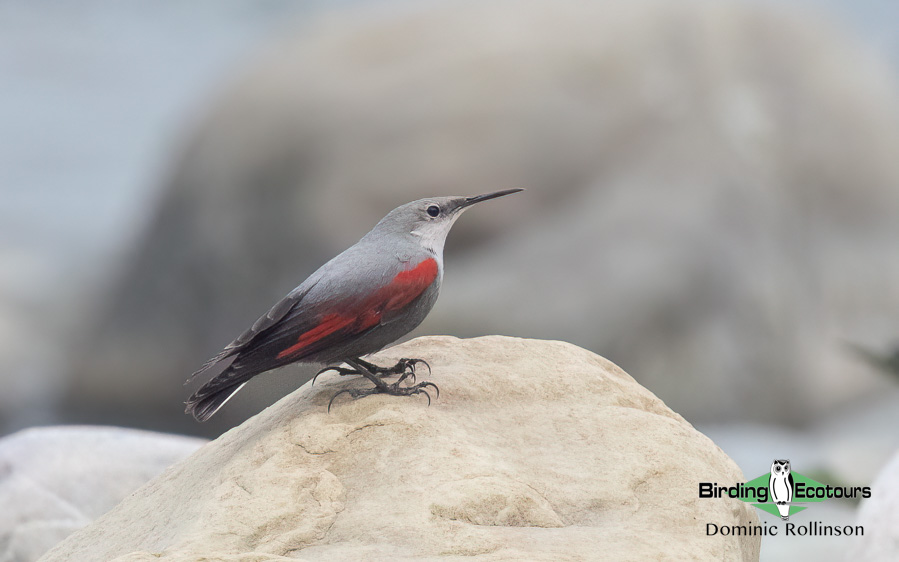
Day 3. Shirvan National Park
Today we will visit one of the best sites for winter birds and birding in the region. Shorgel lakes and Shirvan Reserve IBA, which forms part of Shirvan National Park, Azerbaijan’s first ever national park. The habitats present here include a mixture of saline lakes and semi-desert steppe. There is also a chain of hills here, created by material displaced by the wind, and this area holds the largest population in the southern Caucasus region of the Vulnerable (IUCN) Goitered Gazelle.
This area is also a vitally important site for bird migration, especially for wildfowl, with around 150,000-200,000 birds staging here each fall, and 20,000-35,000 remaining to winter in the area. There is a great range of species available which we have summarized below, however key species we will look for here include the Endangered (BirdLife International) White-headed Duck, Vulnerable (BirdLife International) Lesser White-fronted Goose, the Near Threatened (BirdLife International) Dalmatian Pelican, White-winged Lark, Moustached Warbler, (Asian) Buff-bellied Pipit (japonicus subspecies), Black Francolin, Grey-headed Swamphen, Pallas’s Gull, and large flocks of Little Bustard.
In more general terms the dominant birds here consist of wildfowl, with a wide range of species present, including Greater White-fronted Goose, Greylag Goose, Whooper Swan, Tundra (Bewick’s) Swan, Ruddy Shelduck, Common Shelduck, Northern Shoveler, Northern Pintail, Red-crested Pochard, Common Pochard, Tufted Duck, Eurasian Wigeon, Eurasian Teal, Common Goldeneye, and Smew all possible during our visit. There is also a chance of the stunning Velvet Scoter, Red-throated Loon (Diver), and Black-throated Loon (Diver).
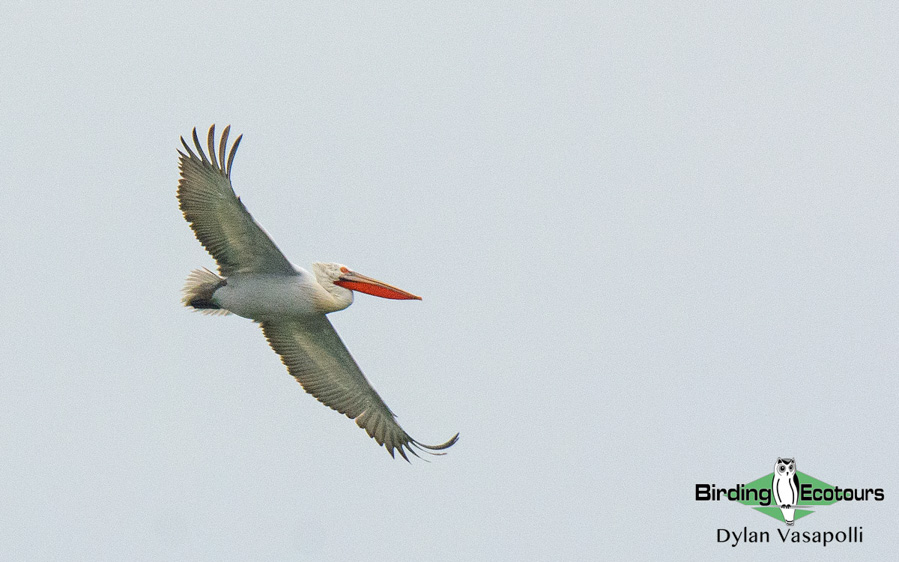
There is also a wide range of other waterbirds here with Horned (Slavonian) Grebe, Black-necked (Eared) Grebe, Greater Flamingo, Spotted Crake, Water Rail, Eurasian Coot, Pygmy Cormorant, Great Bittern, Little Bittern, Great Egret, and White Stork all possible. Passerines are also a constant feature, here we should come across Eurasian Penduline Tit, Calandra Lark, Crested Lark, Bearded Reedling (Tit), Spanish Sparrow, Great Grey Shrike, Black Redstart, Water Pipit (coutelli subspecies), and a whole host of more common and widespread species.
Finally, we should be able to find several raptor species during our time in the area, with Western Marsh Harrier, Hen Harrier, Eurasian Sparrowhawk, Long-legged Buzzard, Rough-legged Buzzard, Common Buzzard, Common Kestrel, White-tailed Eagle, Merlin, and Peregrine Falcon all present, along with the Vulnerable (BirdLife International) Eastern Imperial Eagle.
Overnight: Masalli
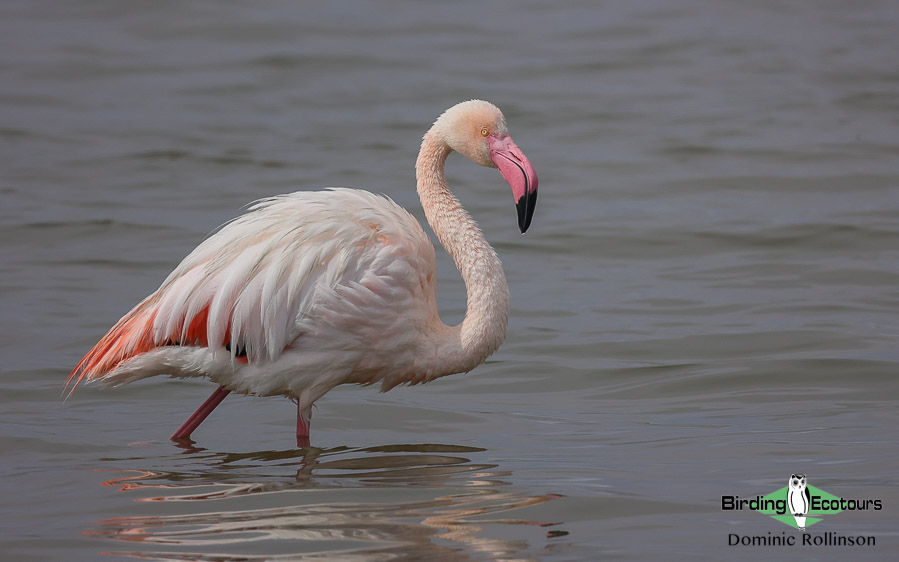
Day 4. Gizilagach State Reserve
Today we will visit the Gizilagach State Reserve IBA. This is one of the most vital overwintering areas for birds in Europe and the largest wetland in Azerbaijan. On average, 500,000 – 1,000,000 birds overwinter in the area, with the majority made up of wildfowl and shorebirds (waders). While the species mix will be similar to the previous day, the number of birds on offer is greatly increased and there are also likely to be a few new species for our list here too, certainly lots to look forward to.
We can expect to see Black Francolin, Common Kingfisher, various herons, all three European swan species, five species of grebe, Dalmatian Pelican, Great White Pelican, Pygmy Cormorant, Common Shelduck, Ruddy Shelduck, Northern Pintail, Northern Shoveler, Eurasian Wigeon, Eurasian Teal, Garganey, Common Pochard, Red-crested Pochard, Ferruginous Duck, Tufted Duck, Long-tailed Duck, Common Goldeneye, Smew, Common Merganser (Goosander), Red-breasted Merganser, and White-headed Duck.
There is also a diverse range of shorebirds (waders) here including Kentish Plover, Temminck’s Stint, Common Snipe, Jack Snipe, Pied Avocet, Grey Plover, European Golden Plover, Northern Lapwing, Common Ringed Plover, Eurasian Curlew, Black-tailed Godwit, Broad-billed Sandpiper, Dunlin, Little Stint, Sanderling, Common Sandpiper, Wood Sandpiper, Green Sandpiper, Spotted Redshank, Common Greenshank, and Common Redshank.
The scrub and reeds around the site are home to Moustached Warbler, Bearded Reedling (Tit), Bluethroat, Hawfinch, Citrine Wagtail, Common (Siberian) Chiffchaff, (Asian) Buff-bellied Pipit (japonicus subspecies), Calandra Lark, and much more. We will also come across a similar range of raptors to the previous day but also stand a chance of finding Greater Spotted Eagle which usually overwinter in the area.
Finally, we will finish the day around the lagoons in the north of the site. Here will be our best chance to observe, and photograph, the stunning Pallas’s Gull, among other gulls like Little Gull, Slender-billed Gull, and Caspian Gull. This is also an excellent area for photographing shorebirds (waders) as they feed along the shoreline.
Overnight: Masalli
Day 5. Gizilagach State Reserve and Mahmudchala Lake
We will start today by once again visiting the Gizilagach State Reserve IBA. This is a large area and by having the morning here will ensure we maximize our chances of seeing as many bird species as possible. After our time here we will head north into Azerbaijan’s interior. The landscape changes as we head towards Lake Mahmudchala. This lake looks unassuming in the vast landscape, but this is yet another vital wintering area for birds.
Among the many shorebirds (waders) we may have seen previously, this site should give us our first look at the beautiful White-tailed Lapwing. This is another range-restricted species in the Western Palearctic and Azerbaijan is the best and safest location to see this species in the region.
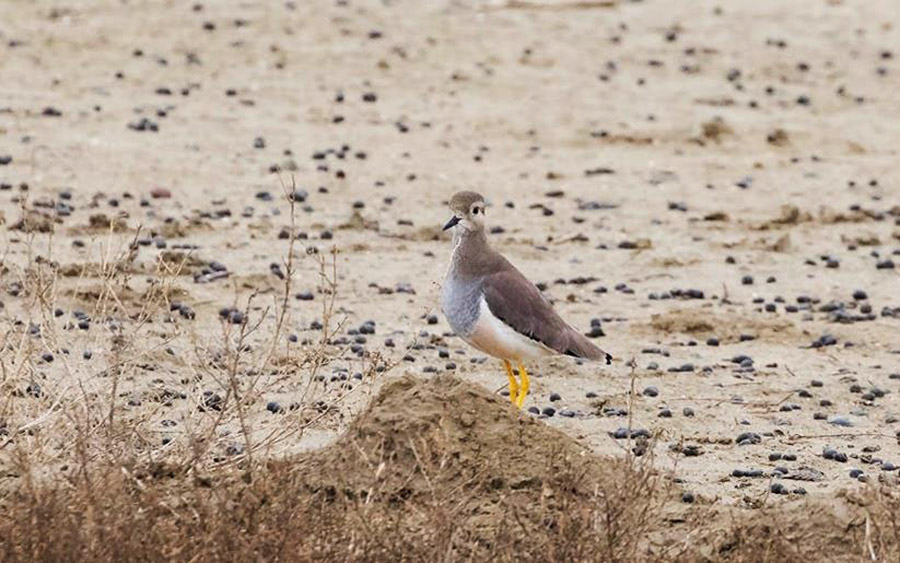
Wildfowl will also again be abundant, with many thousands of ducks overwintering here each year, especially Northern Shoveler, which can number up to 3,000 birds. Standout species here include White-headed Duck and Ferruginous Duck, with the outside chance of Marbled Duck. The usual range of passerines will also be present in the habitat around the lake with species such as Brambling, Crested Lark, Spanish Sparrow, Great Grey Shrike, Corn Bunting, Citrine Wagtail, and Turkestan Short-toed Lark (a 2021, IOC 11.1, east-west split of the former Lesser Short-toed Lark complex, birds in the east are now known as Turkestan Short-toed Lark, and birds in the west are now known as Mediterranean Short-toed Lark), all being possible.
Overnight: Agiabedi
Day 6. Agh Gol National Park (East)
Today we will visit the Aggyol (also known as Agh Gol) National Park. This mix of freshwater and brackish lakes, fens, creeks, flooded forest, and rivers is one of Azerbaijan’s most important ecosystems, and on average around 120,000 birds overwinter at the site each year, making it another important site for them and us!
Agh Gol is a vitally important area for several species classified as of global conservation concern by BirdLife International, including Lesser White-fronted Goose, White-headed Duck, Marbled Duck, Ferruginous Duck, Dalmatian Pelican, and Little Bustard (where 10,000 birds regularly overwinter). During our visit to the park, we have a good chance of seeing all of these species.
In addition to many of the species we have seen previously, we also have the chance of finding two new species for us here: Syrian Woodpecker and the Near Threatened (BirdLife International) Pallid Harrier, a raptor that numbers less than 30,000 individuals globally.
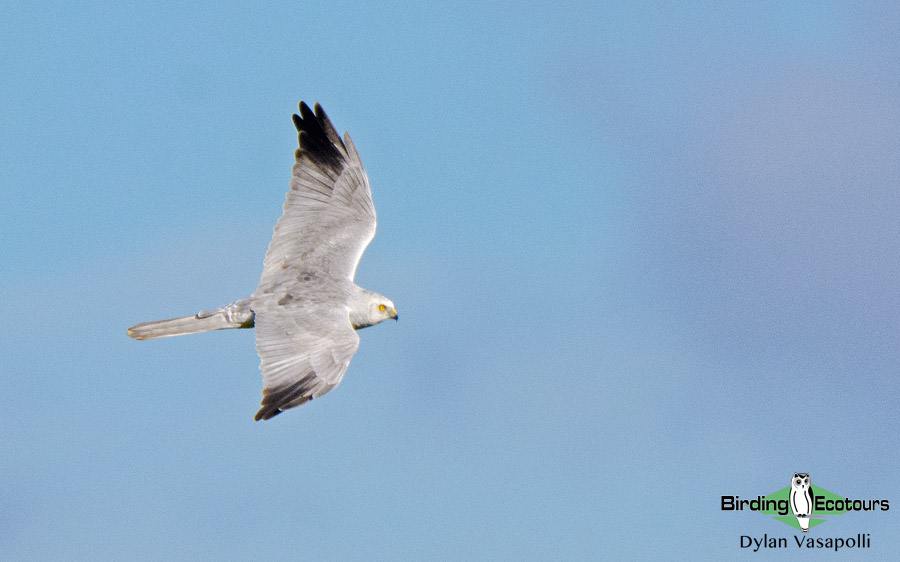
This area also attracts a wide range of passerines in winter with Great Grey Shrike, Brambling, Hawfinch, Eurasian Siskin, Yellowhammer, Dunnock, Eurasian Tree Sparrow, Spanish Sparrow, Bearded Reedling (Tit), and Eurasian Penduline Tit all possible. The scrub around the lakes is also worth checking for another sighting of the beautiful Black Francolin.
Overnight: Agiabedi
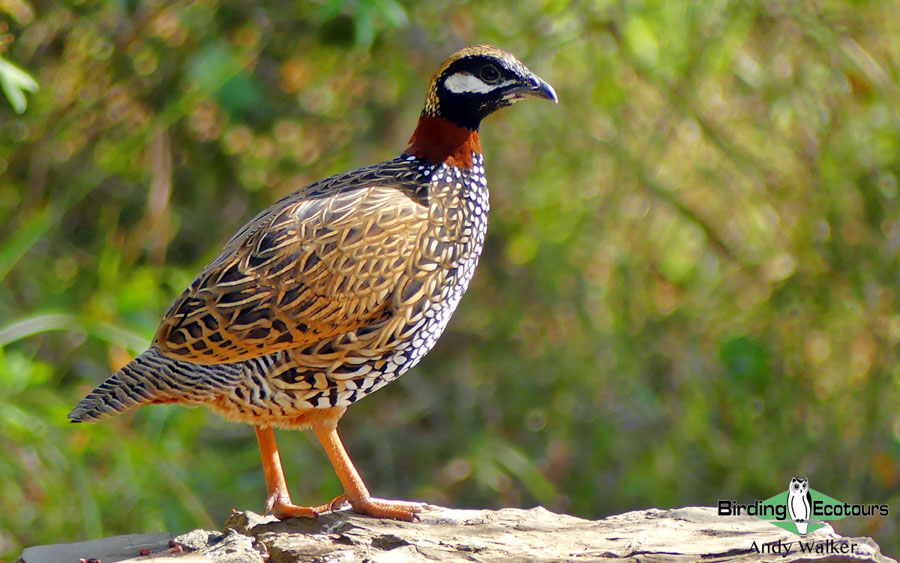
Day 7. Agh Gol National Park (West) and Varvara Wetlands
Once again, we will explore the Agh Gol National Park. The ponds, lakes, and mudflats of the western half of the national park are great locations to look for White-tailed Lapwing and Grey-headed Swamphen, and shorebirds (waders) should be numerous here too, with Pied Avocet, Northern Lapwing, Eurasian Curlew, Ruff, and Spotted Redshank all present, we also have a chance of seeing the attractive Marsh Sandpiper here.
Large waterbirds like Mute Swan, Whooper Swan, Tundra (Bewick’s) Swan, and Greater Flamingo gather here during the winter and we should once again find Dalmatian Pelican and Pygmy Cormorant, probably the best area in Azerbaijan for this species. This part of the national park is also a good area to look for Lesser White-fronted Goose and there are also large groups of the Vulnerable (BirdLife International) Marbled Duck here. We will also keep our eyes peeled for the rather attractive Jungle Cat, another species which is limited to the east of the Western Palearctic, and spreads as far as southeast Asia.
After spending the morning here, we will proceed towards the town of Mingecevir. The road between Agh Gol and Mingecevir can be teeming with Little Bustard at this time of year and we will stop frequently to enjoy the sight and sound of thousands of this fantastic species.
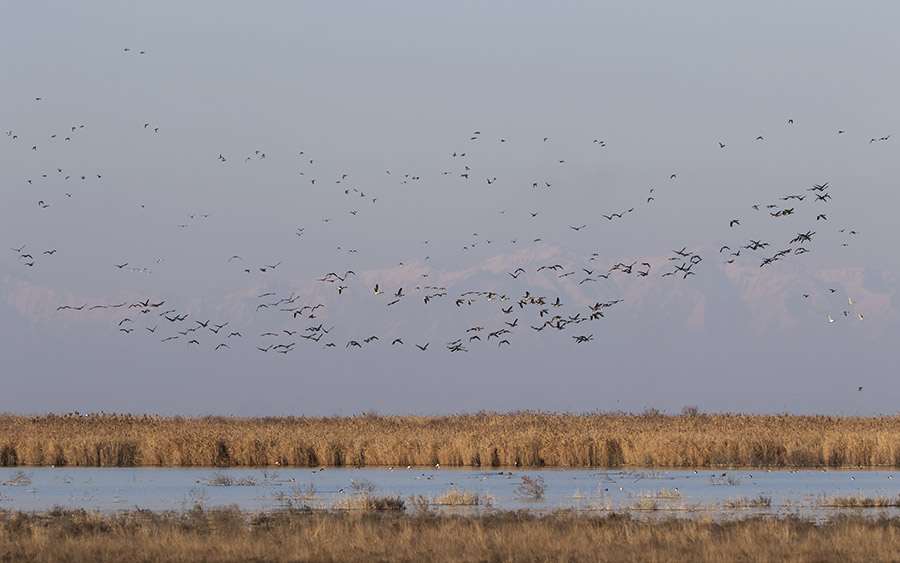
Before arriving at Mingecevir, we will spend the afternoon at the Varvara Wetlands. Here we will find many species that we will have come across at the Agh Gol National Park, but this wetland is worth exploring and an excellent insurance policy in case we have missed any species previously.
This will also be our first chance to find the Near Threatened (BirdLife International) Armenian Gull, yet another range-restricted species. Other exciting species at this site include White-tailed Lapwing, Pallas’s Gull, Dalmatian Pelican, Pygmy Cormorant, Ferruginous Duck, Whiskered Tern, Cinereous Vulture, White-tailed Eagle, Long-legged Buzzard, and interesting passerines like Red-fronted Serin, Moustached Warbler, Hawfinch, Brambling, and Water Pipit (coutelli subspecies).
Overnight: Mingecevir
Day 8. Hajnohur Lake and Mingechevir Reservoir
Today we will explore a mixture of steppe and semi-desert habitats around Hajnohur (also known as Acinohur) Lake. In the past this lake was home to simply incredible numbers of birds in winter with thousands of Greater Flamingo and Ruddy Shelduck, plus tens of thousands of Little Bustard and Calandra Lark. Sadly, the lake is now drier than it once was, so the numbers have decreased, but the spectacle and beautiful scenery remains, so is definitely worth a visit.
The area around the lake is home to a wide range of birds of prey. As we are just a stone’s-throw from Georgia, this is probably our best chance to see the mighty Eastern Imperial Eagle. Overwintering Pallid Harrier will be another key target here, and other exciting species like Griffon Vulture, Cinereous Vulture, Eurasian Goshawk, Hen Harrier, Western Marsh Harrier, Peregrine Falcon, Merlin, and White-tailed Eagle all add to the spectacle.
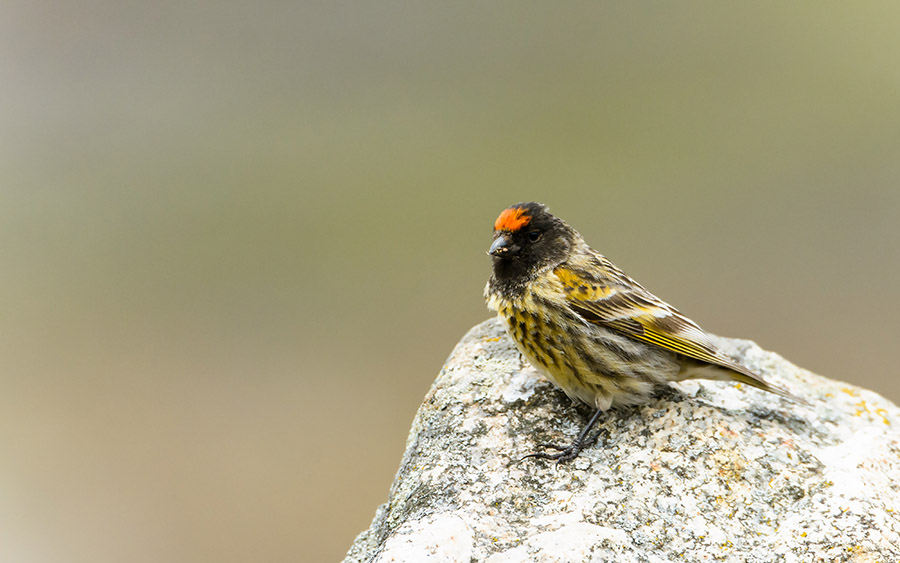
We will spend time with the large numbers of Calandra Lark as they can often contain a range of other interesting lark species. Eurasian Skylark should be the most numerous with lower numbers of Crested Lark, Greater Short-toed Lark, and Turkestan Short-toed Lark. With luck, we may also locate the striking White-winged Lark, and, with even more luck, the beautiful Black Lark, a species which is restricted to the easternmost reaches of the Western Palearctic in winter.
Other interesting species to be found in this habitat includes Western Rock Nuthatch, Rock Sparrow, Ring Ouzel, Red-fronted Serin, Brambling, Eurasian Tree Sparrow, Spanish Sparrow, and Eurasian Siskin. We should once again be treated to the sight and sound of hundreds of Little Bustard, a real privilege to see, given their global conservation status.
We will spend most of the day here, before returning to Mingecevir to have a walk around the reservoir near the town. This will be a relaxing way to finish the day, but should still give us good birds including chances to observe Smew (probably one of the best-looking ducks in the region/the world!), Armenian Gull, Pygmy Cormorant, Dalmatian Pelican, and Red-fronted Serin.
Overnight: Mingechevir
Day 9. Journey to Baku via Turian Chay State Reserve and Hajgabul Wetlands
Today we will make the journey back towards Baku, with birding stops en route. Our first stop will be at the Turian-Chay State Reserve. This highly productive area combines arid hills and the Turyanchay River, which cuts right through the middle of the hills here. Large raptors will be on the agenda again with Griffon Vulture, Cinereous Vulture, Eastern Imperial Eagle, and Golden Eagle all occurring here. Other raptors we may come across include Hen Harrier, Eurasian Sparrowhawk, Eurasian Goshawk, Common Buzzard, Long-legged Buzzard, Common Kestrel, Merlin, and Peregrine Falcon.
The river valley bushes should hold a range of passerines including good numbers of buntings and finches, like Rock Bunting, Corn Bunting, Yellowhammer, Brambling, and Hawfinch. Wintering thrushes should also be in attendance with Redwing, Fieldfare, Ring Ouzel, Common Blackbird, Song Thrush, and Mistle Thrush all likely to be present. We may also get the chance of finding locally rare woodpeckers, like Great Spotted Woodpecker and European Green Woodpecker here.
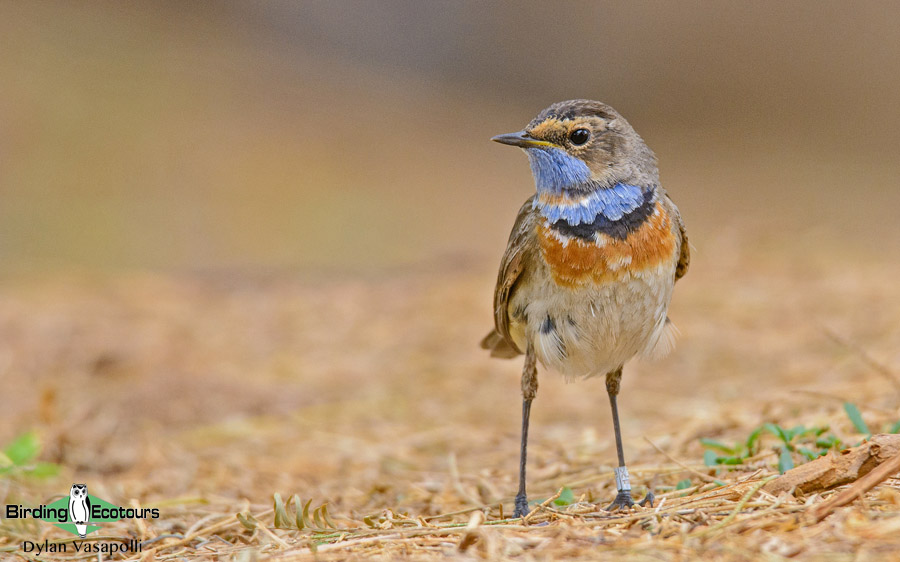
After our birding here, we continue east towards Baku, making a stop at the Hajiquabul Wetlands en route. The wetlands are a reliable location to find a range of wintering wildfowl including Greater White-fronted Goose, Ruddy Shelduck, White-headed Duck, and Red-crested Pochard. Large numbers of shorebirds (waders) like White-tailed Lapwing, Pied Avocet, Little Ringed Plover, and Little Stint can be seen here, along with waterbirds including Dalmatian Pelican, Pygmy Cormorant, Greater Flamingo, and Pallas’s Gull.
We will finish the day by making our way to the coast of the Caspian Sea where we can once again scan the rafts of ducks offshore and search for interesting shorebirds (waders) and passerines along the coast.
Afterwards, we will arrive in Baku for a final group Azeri meal. We will use this last time together to go through the trip list, help with any last minute taxonomic questions, ensure we have your correct eBird usernames to share lists with (if you keep an eBird list of course, no problem if you do not!), and to decide on our “bird of the trip”, never an easy task, especially on this tour which is full of globally fantastic birds.
Overnight: Baku
Day 10. Departure from Baku Airport where the tour ends
A non-birding day. After a final breakfast in our comfortable hotel, we will depart for Baku International Airport, with departures from the airport taking place in the morning.
Overnight: Not included
Please note that the itinerary cannot be guaranteed as it is only a rough guide and can be changed (usually slightly) due to factors such as availability of accommodation, updated information on the state of accommodation, roads, or birding sites, the discretion of the guides and other factors. In addition, we sometimes must use a different international guide from the one advertised due to tour scheduling.
Download ItineraryDuring this winter Azerbaijan tour we will be driving around in a comfortable vehicle. This tour does not involve long walks however some terrain may be rocky, sandy, wet, or muddy. Rubber boots are advised. We will obviously take as much time as is needed as we walk about, to ensure everyone is able to get around safely.
The start of our tour in Baku will see daytime temperatures range from 45 – 50oF (7 – 10oC). We will then head south towards the border with Iran where temperatures will be similar, but nights will possibly fall below 32oF (0oC). As we move into the interior of the country, we should see warmer daytime temperatures of around 55 – 59oF (13 – 15oC), however this can be highly variable with 39 – 70oF (4 – 21oC) possible in extreme cases, so packing a range of weather-suitable gear will be necessary (we will of course send you a more specific packing list closer to departure).
In Azerbaijan we will stay in modern and comfortable hotels with private facilities. Azerbaijan is a rapidly developing nation and the choice of food and facilities on offer will be as good as those in the west.

